
Q: What initially drew you to a career in stand-up?
BJ: When I was in the seventh or eighth grade, the iTunes Store had just become a thing. They had all the old-in some cases not so old-Comedy Central half hours. I was mowing a lot of lawns and doing yard work at the time, and I spent almost all the money I made on music or comedy specials at the iTunes Store. I’ll never listen to it again.
The first comics I loved were Mitch Hedberg and Demetri Martin, who were both great non-sequitur one-liner comedians. I also loved humorous books like those of David Sedaris and Douglas Adams, who wrote The Hitchhiker's Guide to the Galaxy.
I had been writing a little satire zine with two friends, but after college they lost interest. I was also frustrated by writing something that no one would read, so I wanted to find a medium where the engine was my own interest. Stand-up was perfect; even if at first it’s three-minute open mic sets, there are captive audiences, and they give immediate feedback on what sucks and what works. That was the start of it, right after graduating college. I was busing tables and starting to do stand-up.
Q: I’ve seen your stand-up routine twice, once in Atlanta and once in San Francisco. I noticed you have jokes you are comfortable with, and then you have your sheet of paper with new material you’re workshopping. What’s your creative process like for developing new material?
BJ: If I’m on the road, I’ll slip in a few new lines, or some newer material, into the main set. I’ll try to do five to ten minutes of new material on a headline show, and if it’s working consistently, I’ll move it into my regular set and see if it still holds up. If it does, then it has a more permanent home.
Denne historien er fra March 2024-utgaven av Heartfulness eMagazine.
Start din 7-dagers gratis prøveperiode på Magzter GOLD for å få tilgang til tusenvis av utvalgte premiumhistorier og 9000+ magasiner og aviser.
Allerede abonnent ? Logg på
Denne historien er fra March 2024-utgaven av Heartfulness eMagazine.
Start din 7-dagers gratis prøveperiode på Magzter GOLD for å få tilgang til tusenvis av utvalgte premiumhistorier og 9000+ magasiner og aviser.
Allerede abonnent? Logg på
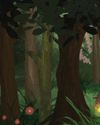
A Flower from THE HEAVENS
November 14 is Children's Day. This year, SARA BUBBER brings to you a world of forests, magical flowers, festivals, and some animals you may have never seen.

Meeting Phenomenal Women
The author, CHITRA BANERJEE DIVAKARUNI, is interviewed here by TARA KHANDELWAL and MICHELLE D'COSTA about her books on mythology, like The Palace of Illusions, which is a retelling of the Mahabharata from Draupadi's point of view, and The Forest of Enchantments, which is a retelling of the Ramayana, from the eyes of Sita. And there's The Last Queen, which is about Rani Jindan's life.
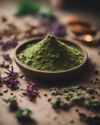
HERBAL TOOTH POWDERS: Rediscovering Ayurveda's Natural Secrets
SRAVAN BANDA presents a natural herbal tooth powder, offering a holistic approach to oral hygiene, harnessing the power of medicinal herbs.

The Dance of Light and Shadow Lessons from the Dolomites
ALAIN DESVIGNE explores the Dolomites, listed as a UNESCO World Heritage Site in 2009.
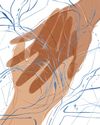
FINDING OUR WAY
A Polynesian Explorer's Journey of Discovery
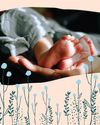
The First Imprint: Understanding PTSD
CHRISTIANNA DEICHMANN is the Director of Education at the Association for Pre and Perinatal Psychology and Health (APPPAH), where she educates both professionals and parents on fostering the most nurturing environments for welcoming new life into the world.

The Tipping Point
In this final conversation of the series, J. FREDERICK ARMENT continues to talk with CHRISTINE JONES about promoting peace in the world.

UNLOCK YOUR POTENTIAL
Take The Brighter Minds Path To Cognitive Development

The Intrinsic Goodness of the Heart
DAAJI shares some thoughts on heartfelt acceptance and all it has to offer. He says, \"It is the heart's intrinsic goodness that allows us to accept everything as part of us.
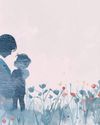
How Does Fear Affect Our Roles as Mothers? - Neelam Shivhare explores some of the great ancient texts of India on motherhood, compares the behavior of Kaikayi and Yashoda
Neelam Shivhare explores some of the great ancient texts of India on motherhood, compares the behavior of Kaikayi and Yashoda, and realizes the importance of removing fear from our hearts in order to nurture our children.For young women like myself, who are future mothers, I trust we are on the path of becoming selfaware and brutally honest with ourselves. We are creative beings, never forgetting the gifts with which we have been bestowed— the love and tenderness, natural instincts, and intuition to feel the right path. It all lies in the mysterious meanderings of the heart. Are we really listening to our hearts, or confusing the bombarding information on social media with reality?